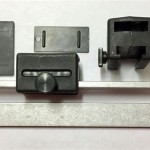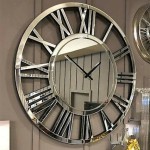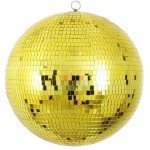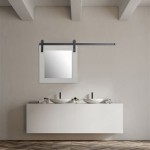Can a Convex Mirror Ever Produce a Real Image?
Convex mirrors are known for their distinctive outward curvature, diverging incident light rays and producing virtual, diminished, and upright images. This characteristic makes them useful in various applications, from car side mirrors to security surveillance. However, understanding the fundamental principles governing image formation in convex mirrors helps clarify whether they can ever deviate from this norm and produce a real image.
Key Principles of Image Formation in Convex Mirrors
Several key principles govern image formation in convex mirrors:
- Divergence of Light: The curved reflecting surface causes incident parallel light rays to spread outwards after reflection.
- Virtual Focal Point: The focal point of a convex mirror is considered "virtual" because it lies behind the mirror's surface. Light rays appear to diverge from this point after reflection.
- Image Location: The image formed by a convex mirror is always located behind the mirror's surface.
- Image Characteristics: The image is always virtual, upright, and diminished (smaller than the object).
Understanding Real and Virtual Images
The distinction between real and virtual images is crucial to answering the question of whether a convex mirror can ever produce a real image. A real image is formed when light rays converge at a point after reflection or refraction. It can be projected onto a screen. A virtual image, on the other hand, is formed when light rays appear to diverge from a point after reflection or refraction. It cannot be projected onto a screen.
The Nature of Reflection in Convex Mirrors
The diverging nature of reflection from a convex surface is the primary reason why these mirrors always produce virtual images. The curvature of the mirror ensures that incident light rays, regardless of their angle of incidence, spread outwards after reflection. These diverging rays never converge to form a real image. Instead, the extension of these reflected rays behind the mirror appears to intersect at a point, creating a virtual image.
Considering the Standard Mirror Equation
The mirror equation, 1/f = 1/do + 1/di, mathematically relates the focal length (f), object distance (do), and image distance (di). For convex mirrors, the focal length is considered negative. Since the object distance is always positive (the object is in front of the mirror), the image distance (di) will always be negative, indicating a virtual image located behind the mirror.
The Impact of Object Placement
Regardless of the object's position in front of a convex mirror, the image remains virtual. Moving the object closer to the mirror only changes the size and location of the virtual image (making it slightly larger and closer to the mirror) but never changes its fundamental nature from virtual to real.
Theoretical Scenarios and Limitations
While under standard circumstances, a convex mirror cannot produce a real image, theoretical scenarios involving modifications to the surrounding medium could be considered. For instance, if the refractive index of the medium surrounding the mirror and object were significantly altered, the light rays might converge after reflection, potentially leading to a real image. However, such scenarios are outside the scope of typical optical setups and require specific, controlled environments.
Practical Implications and Applications of Convex Mirrors
The characteristic virtual image produced by convex mirrors is precisely what makes them valuable in various applications:
- Wide Field of View: The diverging reflected rays create a wider field of view than a plane mirror, allowing for observation of a larger area.
- Diminished Image Size: This characteristic is useful in applications such as car side mirrors, where a smaller image allows drivers to see a larger portion of the road behind them.
- Security and Surveillance: Convex mirrors are frequently used in stores and other locations for security surveillance due to their wide field of view.
Exploring Combinations with Other Optical Elements
While a convex mirror alone cannot produce a real image, it can be used in combination with other optical elements to achieve specific imaging outcomes. For instance, a convex mirror followed by a converging lens can produce real images under certain conditions depending on the relative positions and focal lengths of the mirror and the lens.
The Fundamental Nature of Convex Mirrors
The inherent diverging property of a convex mirror, dictated by its shape and the laws of reflection, determines its inability to produce a real image under typical circumstances. The virtual image characteristic is integral to the practical applications of these mirrors in diverse fields, highlighting the significance of understanding fundamental optical principles.
Can A Convex Mirror Produce Real Image
Can A Convex Mirror Form Real Image Quora
Can A Convex Mirror Form Magnified Image Quora
Can A Convex Mirror Form Real Image Quora

Can A Convex Mirror Produce Real Image When The Object Is Virtual And Vice Versa Concave If Yes How Will It Be Possible Why Quora

Solved Ysis Can A Convex Mirror Produce Real Images If Yes Describe How No Why Not Does Because It Only Produces Virtual For This
Can A Convex Mirror Form Real Image Quora
Can A Convex Mirror Produce Real Image When The Object Is Virtual And Vice Versa Concave If Yes How Will It Be Possible Why Quora

The Focal Length Of A Convex Mirror Infinity Learn By Sri Chaitanya
Can A Convex Mirror Form Real Image Quora








